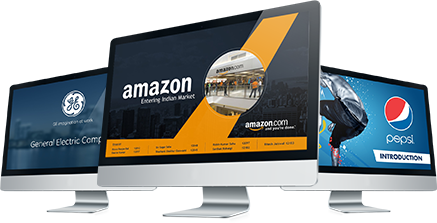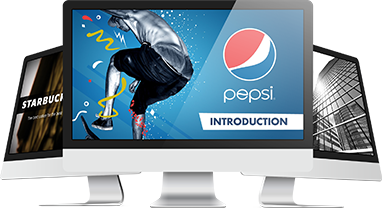According to ad veteran Luke Sullivan, the role of every sales pitch is to sell the merchandise. Some presenters dress up their pitch decks with catchy fonts. Others use dated pop-culture references to sound funny.
But there’s always a risk that pitching style and gimmicks will distract the audience from what you want to sell.
Clients will also be sitting through several other sales pitches. If each competing pitch uses similar catchy gimmicks, this results in clutter. The trick to cutting through this clutter is to be professional enough to not sound like a normal sales pitch.
How can you do this?
Make it simple.

Know Your Product Well
Simplicity is the pitch deck’s professional’s best friend. This maximizes the time you have to pitch your offering, ensuring your concept doesn’t overtake the product, but reinforces your pitch.
As renowned author, Jim Aitchison suggests, knowing every aspect of your product to keeping it simple. Once you have enough information to make a short description, start getting ideas to make an interesting sales message.
Don’t use interesting gimmicks before showing your product. To make your sales pitch interesting enough, avoid sounding like a typical hard sell.
An effective way to talk about your offering is to present your pitch as if you were telling a story. People can more easily remember information if they receive it in the form of a narrative.
Get to the point at the start, describe your product, and focus on what your clients get out of it.
The Catch: Make It Interesting
One thing shared by every pitch deck professional is a balance of showing your merchandise and an interesting execution.
This balance doesn’t let your pitch deck idea get in the way of what you show, simply because it comes from your product.
Once you have that one main offering to feature in your sales pitch, be it a phone with more memory, a car that runs on less fuel or a more comfortable brand of shoes, center your pitch deck strategy on supporting it.
Decide what strategy this will be. Ask yourself the following questions:
Do you want to focus on citing facts known only to your product?
Do you want to show your advantages over the competition?
Do you want to make your benefits the main attraction?
Conclusion
Selling your product is your main objective, and you need clients to invest in your offer. Using gimmicks can be interesting, but not necessarily translate into tangible sales.
Knowing your product should always be your starting point for getting great pitch deck ideas. After you know your product inside and out, talk about its benefits in an engaging manner, be it through storytelling or by getting straight to the point. Center your pitch strategy on the one main offer you want to emphasize to create a solid proposal.
To make the most out of your pitch ideas, get in touch with a pitch deck professional to take your ideas further.

Download free pitch deck templates now.
Get professionally designed pitch deck slides weekly.
Sign Up NowReferences
Aitchison, J. Cutting Edge Advertising: How to Create the World’s Best Print for Brands in the 21st Century. Singapore; New York: Prentice Hall, 2004.
“Craft Your Corporate Presentations into a Great Story.” pitchdeck.com, May 15, 2015. Accessed July 6, 2015.
“Hard Sell Definition.” Investopedia. 2010. Accessed July 6, 2015.
Sullivan, L. Hey, Whipple, Squeeze This! A Guide to Creating Great Ads. Hoboken, NJ – J. Wiley & Sons, 2008.


